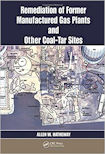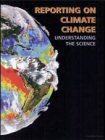Find fellowships, conferences, grants and awards deadlines, workshops and networking opportunities, crowd-sourced leads to job banks, reporting toolkits, hundreds of MOOCs and more. GO >>
Are you an SEJ member who's authored, co-authored or edited a non-fiction or fiction environmental book (published in 2011) you'd like included on this page? Movies are also welcome. Please send the following to web content manager Cindy MacDonald:
- a one-paragraph description
- name of publisher and year of publication
- ISBN number
- .gif or .jpg cover image (optional)
- Internet link to more information (optional)
Find links to members' books published in other years here.
Non-Fiction
"Blue Revolution: Unmaking America's Water Crisis"
By Cynthia Barnett
In her second water book, Barnett reports on the many ways one of the most water-rich nations on the planet has squandered its way to scarcity, and argues the best solution is also the simplest and least expensive: a water ethic for America. From backyard grottoes in California to sinkholes swallowing chunks of Florida, "Blue Revolution" exposes how the nation’s green craze largely missed water — the No. 1 environmental concern of most Americans. But the book is big on inspiration, too. "Blue Revolution" combines investigative reporting with solutions from around the nation and the globe. Reporting from San Antonio to Singapore, Barnett shows how local communities and entire nations have come together in a shared ethic to dramatically reduce consumption and live within their water means. The first book to call for a national water ethic, "Blue Revolution" is also a powerful meditation on water and community in America. Beacon Press, 2011. ISBN: 978-080700317-6. More information.
"Merchants of Virtue: Herman Miller and the Making of a Sustainable Company"
By Bill Birchard
Starting in 1990, an environmental sea change began in Corporate America. The leaders and work forces of large companies started to seek ways to run more responsibly. Herman Miller, Inc., in Zeeland, Michigan, was one of those companies. Over 20 years, the $2 billion maker of office furniture has shown what seemed impossible: Companies do not have to be the root of all environmental problems. They can be the wellspring of solutions. In this narrative, SEJ member Bill Birchard reveals the inside story of the people at Herman Miller who changed their products, processes, and themselves to make the world a greener place. Palgrave Macmillan, 2011. ISBN: 978-0-230-10660-4. More information.
"Once and Future Giants: What Ice Age Extinctions Tell Us About the Fate of Earth's Largest Animals"
By Sharon Levy
Mammoths, camels and saber-toothed cats once walked the ground that has become Wilshire Boulevard in Los Angeles, and foraged on the marsh land now buried beneath Chicago’s streets. Ten-foot-tall kangaroos ripped branches off Australian trees, and woolly rhinoceros roamed through Europe. Then these enormous creatures disappeared — but why? In "Once and Future Giants", Sharon Levy explores the competing theories behind these mass Pleistocene extinctions, while capturing the fervor and enthusiasm of the scientists who dedicate their lives to solving the mystery. From the arrival of Homo sapiens hunters to the changing climate and vegetation, she tours the factors that may have contributed to the giants' demise. Levy goes on to immerse us in the worlds of modern megafauna, showing the surprising ways they alter their environment — and how the changing world, in turn, affects them. Today great beasts like elephants, lions and grizzly bears are threatened worldwide. New research on the demise of ancient megafauna offers vital insights for modern conservation. Oxford University Press, 2011. ISBN 978-0-19-537012-6. More information.
"Rambunctious Garden: Saving Nature in a Post-Wild World"
By Emma Marris
A paradigm shift is roiling the environmental world. For decades people have unquestioningly accepted the idea that our goal is to preserve nature in its pristine, pre-human state. But many scientists have come to see this as an outdated dream that thwarts bold new plans to save the environment and prevents us from having a fuller relationship with nature. Humans have changed the landscapes they inhabit since prehistory, and climate change means even the remotest places now bear the fingerprints of humanity. Emma Marris argues convincingly that it is time to look forward and create the "rambunctious garden," a hybrid of wild nature and human management. Bloomsbury USA, 2011. ISBN-10: 1608190323. ISBN-13: 978-1608190324. More information.
"Remediation of Former Manufactured Gas Plants & Other Coal-Tar Sites"
By Allen Hatheway
Over the long history of former manufactured gas plants (FMGPs) and other coal-tar-producing sites, there was an enormous variety of fuel stocks used as well as many processing and disposal methods, each leading to unique waste and site circumstances. This book supplies the historical information needed to understand and accurately predict the transport and fate of contaminants at these sites. Understanding the processes and history of a particular site is absolutely critical to performing site and waste characterization and ultimately to successful remediation. The second part of the text covers characterization, selection of remedy, remedial design and construction, and regulatory and legal process. CRC Press, 2011. Taylor & Francis Group, Boca Raton, FL. 1,096 p., hardbound; ISBN: 978-0-8247-9106-3. More information.
"Reporting on Climate Change: Understanding the Science" (4th edition)
Edited by L. Jeremy Richardson and Bud Ward
The Environmental Law Institute's fourth edition of its landmark book, "Reporting on Climate Change: Understanding the Science", is edited by L. Jeremy Richardson and SEJ co-founder/member Bud Ward. This bestselling guide helps reporters and editors understand and report on the scientific issues related to global climate change. Initially conceived to be exclusively for the members of the media, it has evolved over time as a resource also for formal and informal climate science educators and for other communicators needing a "plain English" grasp of climate science. Replete with four-color charts, graphs, and graphics that explain the complex scientific issues, this new edition provides readers with timely updates to recent events in the ongoing climate debate, including the UK e-mail hacking scandal, as well as new developments in the science itself. For reporters who are generalists rather than specialists in science or environmental writing, this guide provides an in-depth look at what we do know and still don’t know about climate change, all in non-technical terms. ELI Press, 2011. 96 pages. 8 x 10” ISBN 978-1-58576-156-2. Softcover. More information.
Fiction
"Nuclear Romance"
By Abby Luby
"Nuclear Romance" is a new ebook novel about journalists covering nuclear power and the politics of the utility industry. This debut novel, by New York journalist Abby Luby, was written after the devastating accident at Japan's Fukushima nuclear power plants in March 2011. The protagonist in "Nuclear Romance" is a sports journalist who, because of newspaper cutbacks and internet news competition, is forced to cover the local power plant. His rival and nemesis is a young woman rookie reporter who resorts to blackmail to pump up her byline. The story entwines an unlikely and clandestine love affair that questions journalism ethics against the backdrop of a growing movement of anti-nuclear sentiment, which suddenly escalates after highly radioactive steam escapes from the plant, forcing a mass evacuation. Armory New Media, 2011. ISBN: 978-1-935073-16-1. More information.
Visibility:























